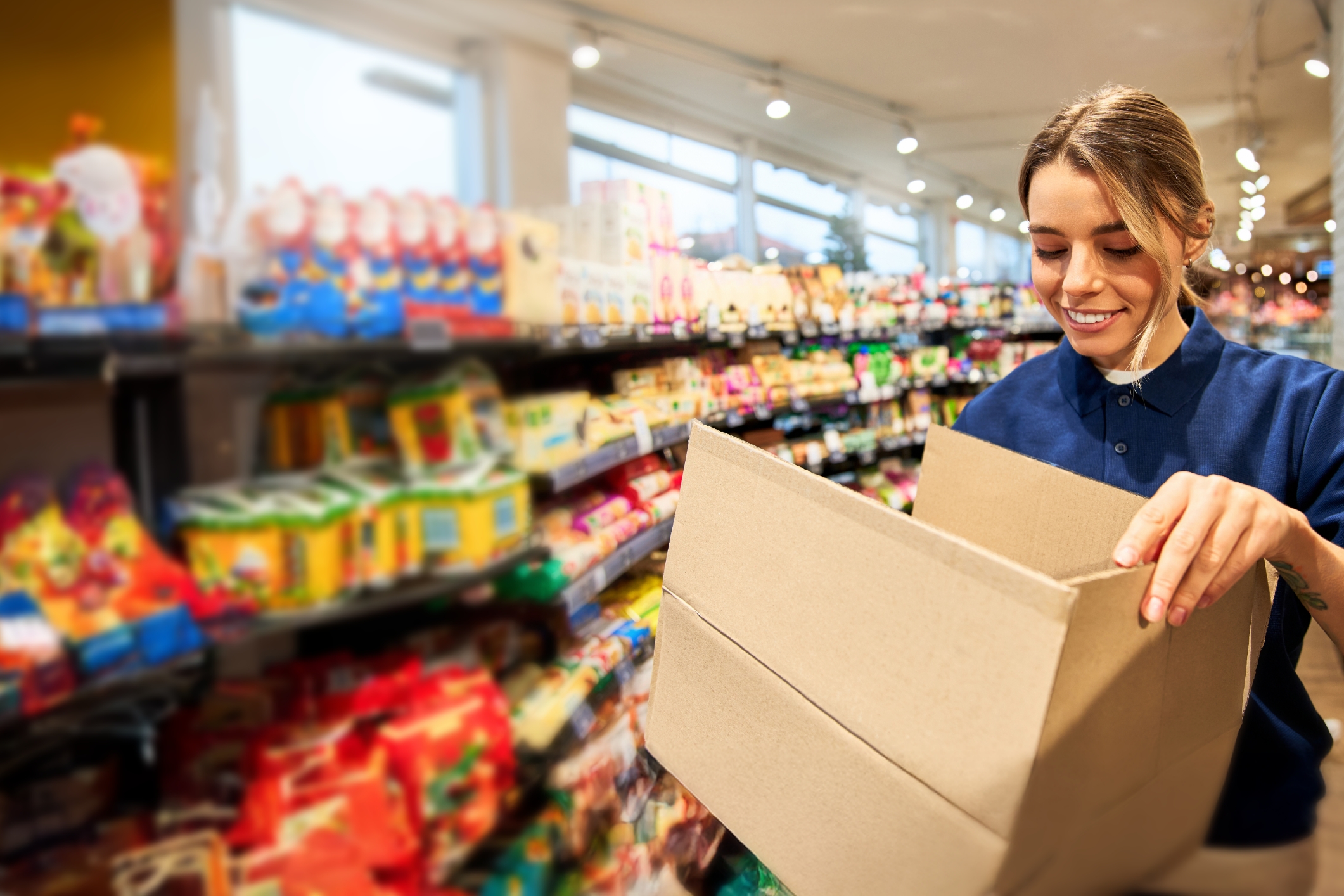 Blog
Blog
 Blog
Blog 7 Top Retail Trends to Lookout for in FY 2025-26
February 25 2025
Scroll to Learn More
The retail industry is experiencing a major transformation due to everchanging consumer preferences, technological progress, and market trends influencing its development. Technology and innovation are fast becoming the center of retail operations, along with solutions to create a sustainable and resilient retail supply chain for a highly curated customer experience. Explore the top retail trends to watch out for this competitive marketplace.
Retail is evolving faster than ever, driven by shifting consumer expectations, rapid technological advancements, and an increasing focus on sustainability. To stay competitive, brands must embrace emerging trends that are reshaping how consumers shop and interact with retailers.
From AI-driven personalization to immersive virtual environments – these upcoming trends are redefining how consumers shop, interact, and connect with your products. Here’s a look at the biggest trends shaping the future of retail and how they can impact your business.
7 Top Retail Trends to Lookout for in FY 2025-26
As customer expectations evolve, retailers must blend technology, personalization, and sensory engagement to create immersive shopping experiences. From phygital retail and AI-powered in-store innovations to hyper-personalization and sustainability, brands must embrace these trends to stay competitive.
Go “Phygital” – The Best of Both Worlds
Phygital retail blends online and in-store experiences, allowing customers to browse online and buy in-store—or vice versa. AI-powered AR and VR enhance engagement with virtual try-ons, immersive product demos, and AI-driven recommendations. This seamless integration boosts conversions, enhances customer experience, and drives sales.
Enhanced In-Store Shopping – Smarter, Faster, Better
AI-powered innovations like digital shelf labels (DSLs), self-checkouts, and smart assistants are transforming in-store experiences. These technologies reduce friction, improve efficiency, and enhance customer convenience, making shopping faster and more interactive.
Sensory Branding – Engaging More Than Just Sight
Brands are increasingly using scent marketing, immersive soundscapes, and touch-enhancing materials to create a multi-sensory shopping experience. These elements reinforce brand identity, influence mood, and enhance customer recall—leading to deeper emotional connections and higher in-store revenue.

Gamification – Turning Shopping into an Experience
Retailers are incorporating AR scavenger hunts, digital reward systems, and interactive contests to make in-store shopping fun, engaging, and rewarding. Gamification keeps shoppers engaged longer, increases brand loyalty, and encourages repeat visits.
Social Commerce – Turning Engagement into Sales
Social media is now a powerful sales channel, with shoppable posts, live shopping, and influencer marketing driving conversions. Consumers discover products on Instagram, TikTok, and Facebook, then purchase instantly. Brands should focus on engaging content, seamless checkout, and leveraging influencers to turn social engagement into revenue.
Hyper-Personalization – AI-Driven Customer Experiences
Unlike traditional marketing, hyper-personalization uses AI and data analytics to deliver real-time, tailored product recommendations and offers. It enhances customer satisfaction, increases conversions, and builds stronger brand loyalty by making shopping uniquely relevant to each individual.
Sustainability – A Retail Imperative
Consumers are increasingly choosing brands committed to sustainability. Businesses must adopt eco-friendly packaging, carbon-neutral shipping, and ethically sourced materials to meet growing demand for responsible, environmentally conscious retail. Sustainability is no longer optional—it’s a competitive advantage.
Conclusion
As the retail landscape is evolving rapidly, these trends emphasize on the need for innovation, adaptability, and a thorough understanding of customer needs. From AI-driven hyper-personalization to immersive shopping experiences and sustainable practices, these changes point to a future where you must combine technology with authentic customer engagement. Embracing these trends is not only for staying competitive; it’s about crafting meaningful and memorable experiences that resonate with today’s smart customers.
Embrace these transformations for increased engagement and position your brand at the forefront of retail’s next chapter. Leverage Archway to elevate your retail marketing and execution, contact us today.
FOLLOW ALONG
Sign up for our resources to stay informed about the latest updates in the industry.
Every Company has a Story. Learn More About Ours.




